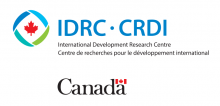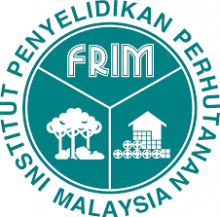Science
News

04 Sep 2008
The research establishes the power of The Cancer Genome Atlas project and shows that it has the potential to expand rapidly our knowledge of the genetic alterations involved in cancers.

04 Sep 2008
China's national treatment program has significantly reduced the mortality rate of HIV-infected blood donors through the use of 'cocktail' drugs

03 Sep 2008
From a small set of servers under a single desk to a global network of dedicated data centres processing information by the petabyte, Nature celebrates the 10 year anniversary of Google with a special issue. A collection of news features, essays and commentary articles examines how ‘big data’ is transforming science.

31 Aug 2008
Summaries of newsworthy papers include Geoscience: Rapid ancient sea level rise, Neuroscience: Why the brain makes new nerve cells, Nature: Telomerase structure revealed and Nature: Genetics of geography

29 Aug 2008
The greatest challenge in paper recycling is removal of polymeric ink and coating; and the most difficult paper is mixed office wastepaper. Traditional deinking processes involve large quantities of chemicals which are expensive and unfriendly to the environment. A better alternative would be a technology that involves biological intervention.

27 Aug 2008
A triaxial apparatus set-up is common in most geotechnical laboratories. This research describes the innovation and improvement that can be carried out for a long-term triaxial filtration compatibility test.

27 Aug 2008
Hearing: Encouraging hair growth, Dark secrets of Milky Way’s satellite galaxies, Viruses affect the carbon cycle, Reprogramming without pluripotency, Unravelling current coils in the Earth’s geodynamo, Altered states, Rethinking Hedgehog signalling, Quantum boost, BDNF and chromatin remodelling and Kids learn to share by age 7–8

27 Aug 2008
In Nature China this week - Biosensors: Infiltrate to enhance, Metabolic syndrome: Nonpeptide peps up therapy, Mouse pheromones: Secret seducers, Gene expression: Cluster spotting and Graphene: Thickness detector

24 Aug 2008
Summaries of newsworthy papers include Quantifying the Arctic carbon pool, Exploitative tricks of antibiotic-resistant bacteria, Domino drug action, Stem cells classified, Glaciers and river nutrients and A jolt to plume models?

21 Aug 2008
The latest newsletter from the EEPSEA is now available for download.

21 Aug 2008
SciDev.Net is pleased to announce that Shiow Chin Tan, a Malaysian journalist, is the recipient of the second 'IDRC–SciDev.Net Science Journalism Award'.

20 Aug 2008
Summaries of newsworthy papers include Imaging of filaments from a giant galaxy, Oxidation strikes gold, Bacteria sacrifice themselves for the greater good, Ice clouds in the martian atmosphere, A potentially dangerous molecule on the loose and What a tangled web

20 Aug 2008
In Nature China this week - Researchers in China have identified a genetic locus that is important for regulating hybrid sterility and more

20 Aug 2008
The latest issue of Journal of Tropical Forest Science from the Forest Research Institute of Malaysia is now available

20 Aug 2008
This research is part of an on-going effort to produce strong foundation on soft soils using concrete as the base. The main objective is to produce lightweight concrete with adequate strength. The study here applied foaming agent to produce concrete that are lightweight.

17 Aug 2008
Antibodies isolated from survivors of the 1918 pandemic influenza virus can protect mice from lethal infection. Summaries of newsworthy papers include New susceptibility gene for type 2 diabetes, Ion channels implicated in bipolar disorder and Cancer taking the Myc

14 Aug 2008
Several common moisturizing creams can increase the formation of non-melanoma skin tumors when applied to UV-radiation treated mice, according to research published online this week in the Journal of Investigative Dermatology.

13 Aug 2008
Summaries of newsworthy papers include Practical cloaking devices, Biofuels: A genomic approach, Key receptor identified for HCMV infection, A two-faced drug, A trick to conjure with, Solid at the core, Changing cycles and Spooky speed limit

13 Aug 2008
UPM Board of Directors Chairman, Professor Emeritus Tan Sri Dr. Syed Jalaludin Syed Salim was announced as winner of the National Academic Personality Award 2007 for his many contributions in developments of education as well researches in developing the nation’s human capital in science, technology, and humanities.

13 Aug 2008
Four UPM researches will perforate the international market including countries like Indonesia, Iran, Australia, Sri Lanka, Thailand, and Singapore

13 Aug 2008
Three Universiti Putra Malaysia (UPM) researchers swept three gold awards at the Malaysia Nuclear Innovation Award 2008 in line with the Innovation Nuclear Agency Day held recently.

13 Aug 2008
UPM researchers have found a process to use the nutrient rich aquaculture sediment waste to produce microalgal biomass, which can be harvested for health and functional foods, feed additives and soil conditioner while reducing environmental pollution from aquaculture waste.

13 Aug 2008
In Nature China this week - The mouth of the 'dragon' protein could be the key to a bird-flu cure and more

10 Aug 2008
Japan-Brazil Exchange Year & Keio University 150th Anniversary International Symposium to commemorate the 100th anniversary of Japanese emigration to Brazil and 150th anniversary of Keio University “ Dekasegi (migrant workers) workshop” will also be held

10 Aug 2008
The program, named “Keio KANRINMARU Project” invites applications from around the world for 3 positions as Associate Professor and 10 positions as Assistant Professor.

10 Aug 2008
Newsworthy papers include Cleaning up the house, The ocean’s surprisingly hungry algae, Made in yeast, Genetic risk factor for chronic inflammatory disorder, Rats weigh up the evidence, An antibacterial catapult, Adopting an orphan receptor and Better action anticipation in elite basketball players

07 Aug 2008
Summaries of newsworthy papers include Where is the science in drug doping?, Blueprint for infection, Virus to virus, A secreted factor controls the bacteria’s virulence, Asymmetric inner workings revealed and A potted history of milk

06 Aug 2008
In Nature China this week - A genetic technique to produce single-sex commercial fish stocks has been successfully tested on Chinese sole and more highlights.

05 Aug 2008
A montane crab, S.tenebrosa was first described by a well-known carcinologist (L.B. Holthius) in 1979. It is categorised as endangered species. Besides the two national parks mentioned, the habitats of this species in Murum River systems had been heavily disturbed by logging activities.

04 Aug 2008
The 2008 iBoP Grant Competition is now officially open! Individual researchers and groups/institutions who are working on BoP issues and/or the development of S&T-related policies can apply for grants of up to 25,000 CAD (Canadian Dollars).
Giants in history
Chinese biochemist Chi Che Wang (1894 - 1979), one of the first Chinese women to study abroad, advanced to prominent research positions at American institutions including the University of Chicago and the Northwestern University Medical School.
Ruby Sakae Hirose (1904 – 1960) was a Japanese-American scientist whose research contributed significantly to our understanding of blood clotting, allergies and cancer.
Chinese electron microscopy specialist Li Fanghua (6 January 1932 – 24 January 2020) facilitated the high-resolution imaging of crystal structures by eliminating interference.
Sálim Moizuddin Abdul Ali (12 November 1896 – 20 June 1987), commonly referred to as the Birdman of India, was the first person to conduct systematic surveys of birds from across India.
Haisako Koyama (1916 – 1997) was a Japanese solar observer whose dedication to recording sunspots – cooler parts of the sun’s surface that appear dark – produced a sunspot record of historic importance.
Michiaki Takahashi (17 February 1928 – 16 December 2013) was a Japanese virologist who developed the first chickenpox vaccine.
Toshiko Yuasa (11 December 1909 – 1 February 1980) was the first Japanese female physicist whose research on radioactivity shed light on beta decay – the process in which an atom emits a beta particle (electron) and turns into a different element.
Angelita Castro Kelly (1942-2015) was the first female Mission Operations Manager (MOM) of NASA. She spearheaded and supervised the Earth Observing System missions during its developmental stage.
Malaysia’s first astrophysicist, Mazlan binti Othman (born 11 December 1951) was instrumental in launching the country’s first microsatellite, and in sending Malaysia’s first astronaut, Sheikh Muszaphar Shukor, into space.
Known as Mr. Natural Rubber, chemist and researcher B. C. Shekhar (17 November 1929 – 6 September 2006) introduced a number of technical innovations that helped put Malaysia’s natural rubber industry on the world map.
Shinichiro Tomonaga (31 March 1906 – 8 July 1979), together with Richard Feynman and Julian Schwinger, was awarded the Nobel Prize in Physics in 1965, for their contributions to advance the field of quantum electrodynamics. Tomonaga was also a strong proponent of peace, who actively campaigned against the proliferation of nuclear weapons and promoted the peaceful use of nuclear energy.
South Korean theoretical physicist Daniel Chonghan Hong (3 March 1956 – 6 July 2002) achieved fame in the public sphere through his research into the physics of popcorn.
Japanese chemist Kenichi Fukui (4 October 1918 – 9 January 1998) was the first Asian scientist to be awarded the Nobel Prize in Chemistry. Together with Roald Hoffman, he received this honour in 1981 for his independent research into the mechanisms of chemical reactions.
Chinese palaeontologist, archaeologist and anthropologist Pei Wenzhong (January 19, 1904 – September 18, 1982) is regarded as a founder of Chinese anthropology.
Physicist Narinder Singh Kapany (31 October 1926 – 4 December 2020) pioneered the use of optical fibres to transmit images, and founded several optical technology companies. Born in Punjab, India, he worked at a local optical instruments factory before moving to London for PhD studies at Imperial College. There, he devised a flexible fibrescope to convey images along bundles of glass fibres.
Japanese physicist Ukichiro Nakaya (1900-1962) made the world’s first artificial snowflakes. He started his research on snow crystals in the early 1930s at Hokkaido University, where there is an unlimited supply of natural snow in winter. By taking over 3,000 photographs, he established a classification of natural snow crystals and described their relationship with weather conditions.
The field of solid-state ionics originated in Europe, but Takehiko Takahashi of Nagoya University in Japan was the first to coin the term ‘solid ionics’ in 1967. ‘Solid-state ionics’ first appeared in 1971 in another of his papers, and was likely a play on ‘solid-state electronics’, another rapidly growing field at the time.
Charles Kuen Kao (Nov. 4, 1933 to Sept. 23, 2018) was an engineer who is regarded as the father of fibre optics. His work in the 1960s on long distance signal transmission using very pure glass fibres revolutionized telecommunications, enabling innovations such as the Internet.
Chika Kuroda (24 March 1884 – 8 November 1968) was a Japanese chemist whose research focussed on the structures of natural pigments.
Motoo Kimura (13 November 1924 – 13 November 1994) was a Japanese theoretical population geneticist who is best remembered for developing the neutral theory of molecular evolution.
Meghnad Saha (6 October 1893 – 16 February 1956) was an Indian astrophysicist best known for formulating the Saha ionization equation which describes the chemical and physical properties of stars.
Sir Jagadish Chandra Bose (30 November 1858 – 23 November 1937) was a scientist and inventor who contributed to a wide range of scientific fields such as physics, botany and biology.
Osamu Shimomura (27 August 1928 – 19 October 2018) was a Japanese organic chemist and marine biologist who dedicated his career to understanding how organisms emitted light.
Subrahmanyan Chandrasekhar (19 October 1910 – 21 August 1995) was an Indian astrophysicist who studied the structure and evolution of stars.
Joo-myung Seok (November 13, 1908 – October 6, 1950) was a Korean butterfly entomologist who made important contributions to the taxonomy of the native butterfly species in Korea.
Mathematician Maryam Mirzakhani (12 May 1977 – 14 July 2017) was the first and only woman and Iranian to date to win the Fields Medal in 2014 for her work on curved surfaces.
Sir Chandrasekhara Venkata Raman (7 November 1888 – 21 November 1970) was an Indian physicist who performed ground-breaking research in the field of light-scattering.
Mohammad Abdus Salam (29 January 1926 – 21 November 1996) was a theoretical physicist and the first Pakistani to receive a Nobel Prize in science.
Srinivasa Ramanujan (22 December 1887 – 26 April 1920) was a math prodigy and widely considered one of India’s greatest mathematicians. Despite having almost no formal training in mathematics, he made substantial contributions to mathematical analysis, number theory, infinite series and continued fractions.
Gopalasamudram Narayanan Ramachandran (8 October 1922 – 7 April 2001) is best known for developing the Ramachandran plot to understand the structure of short chains of amino acids, known as peptides.
Hitoshi Kihara (1893 – 1986) was one of the most famous Japanese geneticists of the 20th century. One of his most significant contributions was identifying sex chromosomes (X and Y) in flowering plants.
Chien-Shiung Wu (31 May 1912 – 16 February 1997) was an experimental physicist who made several important contributions to nuclear physics. Wu worked on the Manhattan Project – a top-secret program for the production of nuclear weapons during World War II and helped to develop a process for separating uranium into U235 and U238.
Meemann Chang (born 17 April 1936) is a Chinese palaeontologist who studied the fossils of ancient fish to understand the evolution of life. By examining fossils, she uncovered new insights on how vertebrates, animals with a backbone, migrated from the sea and became adapted to live on land.
Bibha Chowdhuri (1913 – 2 June 1991) was an Indian physicist who researched on particle physics and cosmic rays. In 1936, she was the only female to complete a M.Sc. degree at the University of Calcutta.
Lin Lanying (7 February 1918 – 4 March 2003) was a Chinese material engineer remembered for her contributions to the field of semiconductor and aerospace materials. Lanying was born into a family who did not believe in educating girls and she was not allowed to go to school.
Japanese geochemist Katsuko Saruhashi developed the first method and tools for measuring carbon dioxide in seawater





































